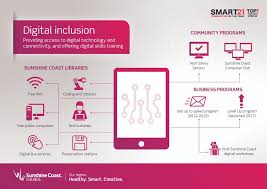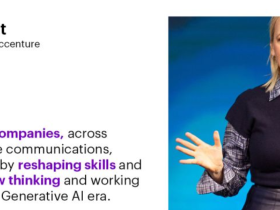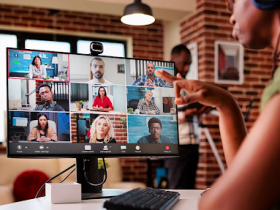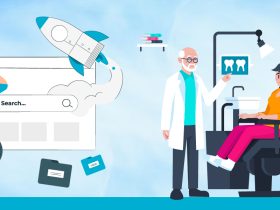Post Preview
Table of Contents
- The Importance of Connectivity in Today’s World
- What Are Lifeline Programs?
- How Lifeline Programs Enhance Education
- Access to Healthcare Through Lifeline Programs
- Boosting Employment Opportunities
- Empowering Communities and Fostering Inclusion
- Supporting Lifeline Programs and Future Improvements
- Conclusion
In today’s interconnected world, having reliable internet and telecommunication access is essential. From business operations to online learning, much of our daily activities depend on staying connected. However, many low-income households struggle to maintain such connectivity due to financial constraints. This is where programs like the Lifeline Program come into play, offering critical support to bridge the digital divide and ensure broader inclusivity.
Lifeline programs provide vital telecommunication services, making it easier for those in need to access education, healthcare, and employment opportunities. By offering discounted or free phone and internet services, these initiatives are not just about connectivity; they’re about empowerment and community development. Such programs enable individuals to participate more fully in society, driving socio-economic progress and fostering a sense of inclusion.
The Importance of Connectivity in Today’s World
From online banking to virtual classrooms, internet connectivity touches every aspect of our lives. Whether you’re shopping for groceries, applying for jobs, or attending telehealth appointments, a stable internet connection is crucial. However, low-income families often face significant barriers to accessing these essential services. High costs and limited availability can leave many households digitally stranded, unable to participate fully in modern society. This lack of access exacerbates socio-economic divides, making it ever more important for initiatives like Lifeline programs to exist.
What Are Lifeline Programs?
Lifeline programs, established in 1985, were designed to make telecommunication services more affordable for low-income consumers. These programs provide discounts on phone and internet services, ensuring that everyone has the chance to connect to the services they need. By reducing the cost barrier, Lifeline programs offer a safety net that supports essential communication and access to various online resources, which are particularly invaluable during times of crisis, natural disasters, or pandemics.
Eligibility and Services
Eligibility for Lifeline programs typically includes criteria such as participation in federal assistance programs or meeting income-based requirements. Services provided range from basic phone services to broadband internet, offering a spectrum of connectivity options to suit varying needs. This flexibility ensures that users can select the service that best meets their unique circumstances, thereby making the program more effective and far-reaching.
How Lifeline Programs Enhance Education
Access to online educational resources can be a game-changer for students from low-income families. Lifeline programs play a crucial role in providing these students with the connectivity they need to excel academically. With the rise of digital learning platforms, students can attend virtual classes, access extensive educational materials, and even participate in online tutoring—all from the comfort of their homes. This access opens doors to a wealth of knowledge and learning opportunities that would otherwise be inaccessible.
Numerous success stories highlight the impact of these programs, such as students who have leveraged internet access to enhance their studies, participate in online classes, and use educational apps to supplement their learning. For more insights on the importance of online education access, visit this educational resource.
Access to Healthcare Through Lifeline Programs
Telehealth is revolutionizing healthcare by making medical services more accessible, especially for those in remote or underserved areas. Lifeline programs ensure that low-income families can utilize telehealth services, providing a lifeline in more ways than one. Telehealth allows for consultations, follow-up appointments, and even some diagnostic services to be conducted virtually, significantly reducing the need for costly and time-consuming travel to medical facilities.
Reliable connectivity means families can attend virtual doctor visits, manage prescriptions, and receive timely medical advice without facing transportation or cost barriers. When it comes to mental health treatments, managing chronic diseases, and other urgent medical issues, accessibility can be very important.
Boosting Employment Opportunities
In order to look for work, apply for jobs, and participate in virtual interviews, job seekers must have internet connectivity. Through lifeline programs, people can obtain and keep jobs by bridging this gap. In a time when working remotely is more common, having dependable connectivity is not only advantageous but also necessary.
Numerous success stories demonstrate how connectivity facilitated by Lifeline has assisted people in finding work, underscoring the significant influence of these initiatives. Connectivity is essential for economic mobility, whether it is for networking on professional platforms like LinkedIn, accessing job boards, or posting resumes. Additionally, ongoing internet access is necessary for skill development via webinars and online courses, which improves employability even more.
Empowering Communities and Fostering Inclusion
The benefits of Lifeline programs extend beyond individual households. They empower entire communities by promoting digital inclusion, fostering social connections, and creating opportunities for civic engagement. When everyone has equal access to digital resources, the collective knowledge base of the community grows, leading to more informed and engaged citizens.
By bridging the digital divide, these programs ensure that everyone, regardless of income, can participate in the digital world. Community success stories highlight the transformative power of connectivity, showing how access to information and services can uplift entire neighborhoods. These stories provide compelling examples of how Lifeline programs not only help individuals but also contribute to the social and economic fabric of the community.
Supporting Lifeline Programs and Future Improvements
Supporting and advocating for Lifeline programs is crucial for their continued success. Raising awareness, promoting policy reforms, and engaging in community outreach are all ways that individuals and organizations may make a difference. Furthermore, improving the lives of individuals who depend on these programs can be achieved through volunteer work and donations.
Future enhancements to Lifeline programs could include expanded service offerings and improved access to the latest technology, ensuring that these programs remain relevant and effective in a rapidly evolving digital landscape. Innovations like 5G connectivity and affordable smart devices could further enhance the program’s impact. Stakeholders, including policymakers, telecommunication companies, and non-profits, should collaborate to ensure that Lifeline programs continue to adapt and meet the needs of the most vulnerable populations.
Conclusion
Lifeline programs play a pivotal role in transforming lives through enhanced connectivity. By providing essential telecommunication services, they help individuals access education, healthcare, employment, and more, empowering communities and promoting digital inclusion. These programs not only reduce financial barriers but also equip individuals with the tools they need to succeed in today’s digital age.
As we move forward, it is essential to support these programs and advocate for their continued development to ensure everyone has the opportunity to thrive in our interconnected world. Whether it’s through personal advocacy, community efforts, or policy support, every contribution counts towards making a more inclusive digital future.









Leave a Reply
View Comments